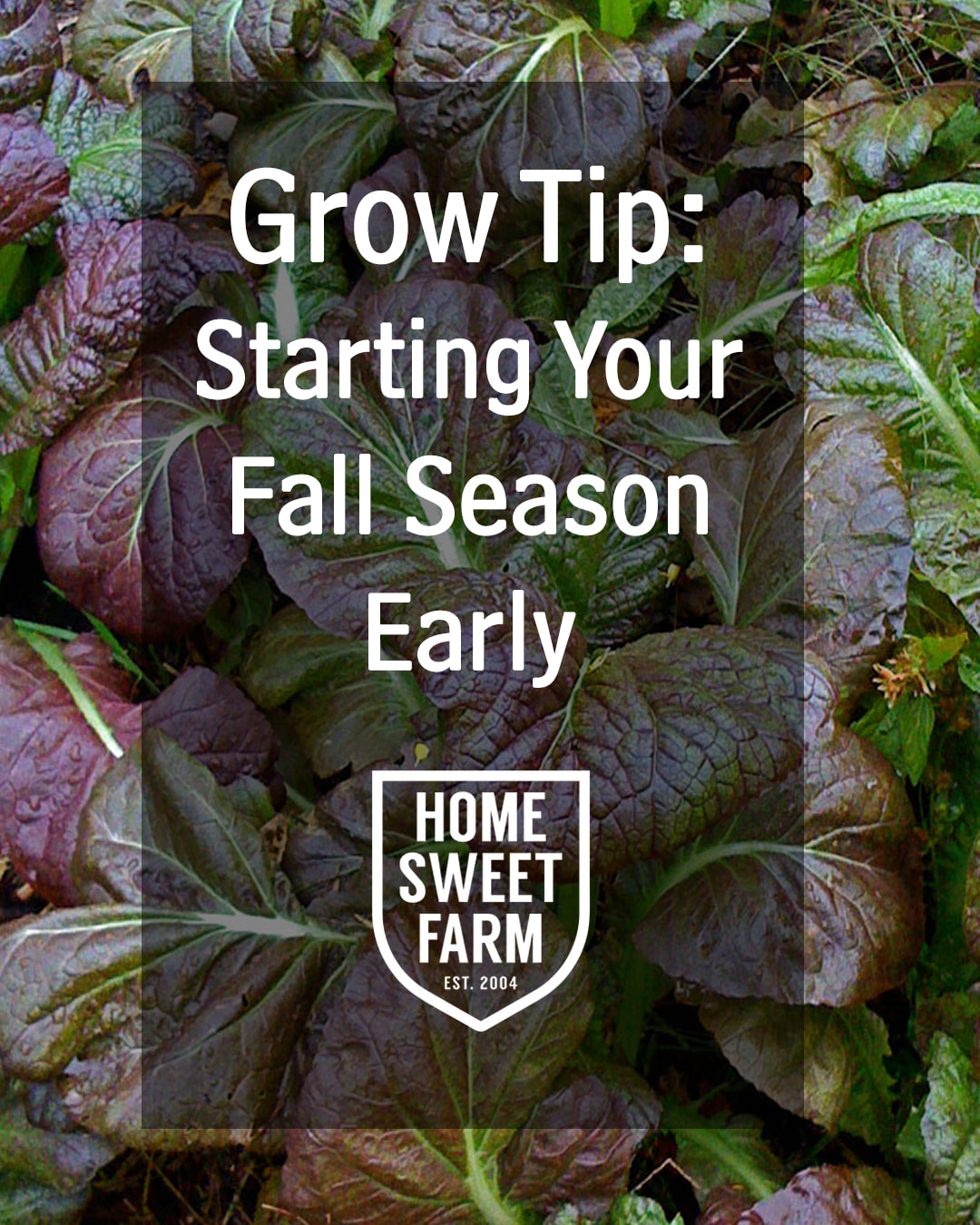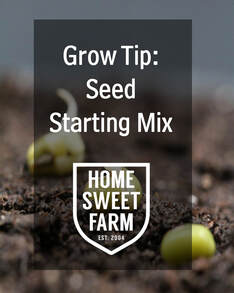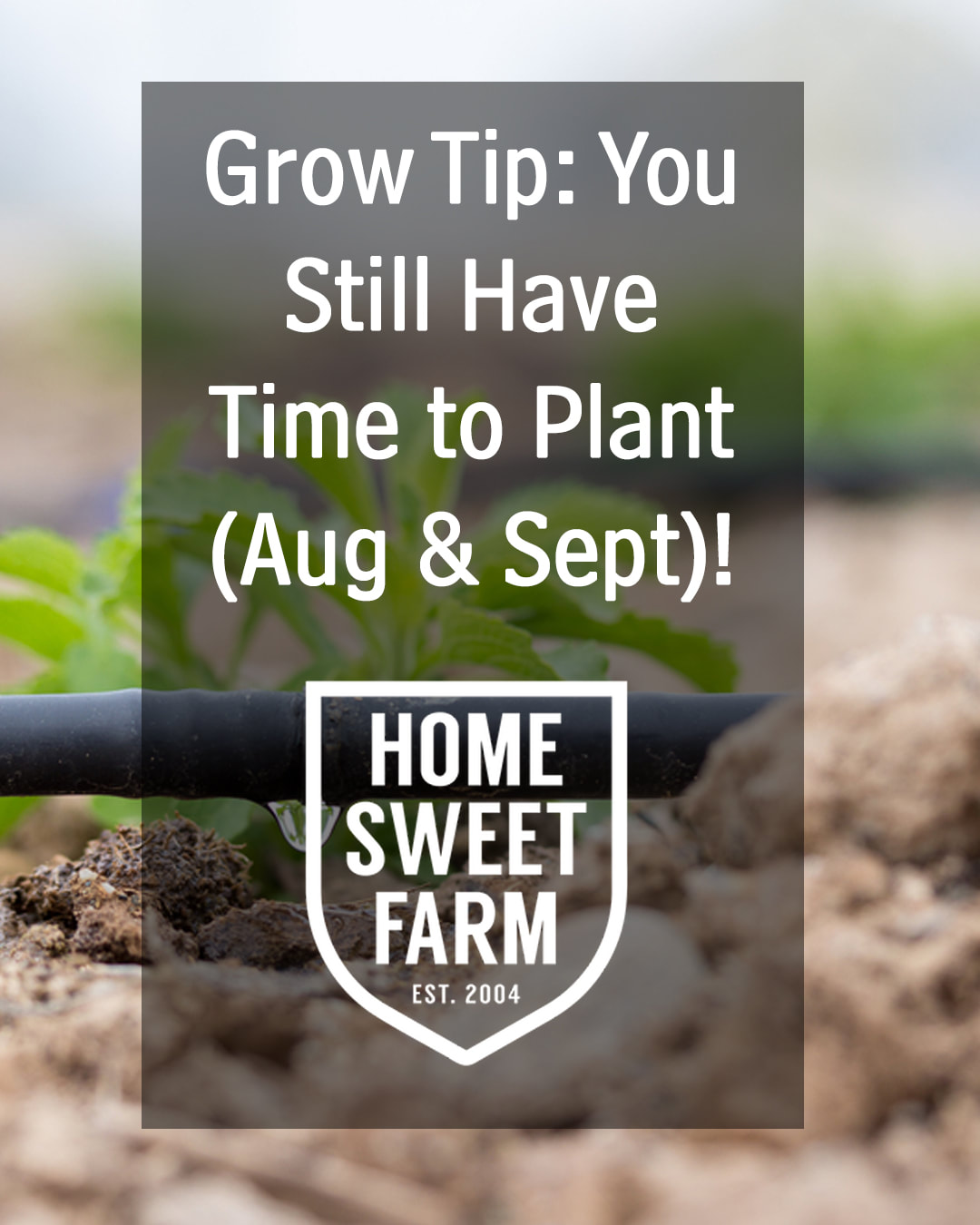Direct Seeding
Assuming your beds are prepared for the fall, it’s time to complete warm season direct seeding. By starting early, you gain weeks of grow time before the first frost. The early crops that still have time for production include green beans, cucumbers, summer squash, zucchini and peas. Plant these seeds ½” deep and water daily if needed to keep moist for germination. Light mulching with straw may help, best to be applied as a side dressing. Drip or overhead irrigation as needed, to keep soil moist, then back off watering once your seed germinates. Covering your beds with Agribon or 40% shade will help you get a head start in the heat, and may be necessary in the most extreme seasons. Seeding Transplants Our favorite propagation containers are 1020 72 count trays or 52 count trays with mesh support trays. These 1020 trays are standard equipment for commercial growers and can be reused for multiple seasons. Start 2 to 3 seeds per cell and cover the tray with plastic wrap to help prevent the soil from drying out. Once seeds germinate you can remove the plastic wrap and begin watering as needed. Sometimes setting the cell trays into a 1020 tray with no drain holes helps if you’re not going to be able to watch the trays throughout the day. Seeds should emerge in 10 to 14 days and may need to be placed indoors if the outdoor temperatures are over 90 degrees. Ideal temp is in the 75 to 85 degrees for most fall cultivars. Varieties to get started include: brassicas (broccoli, cauliflower, kale, cabbage, etc.), lettuce, Chinese cabbage, Asian Greens, burdock, cilantro, parsley, dill, fennel, to name a few. Here is our short video on starting your seed trays. Shade Fabric Shade fabric is one of the greatest tools in the South to extend your garden. We have found that providing 40% shade provides almost 3 extra months of production! That’s a month and a half extending the summer crops and making it possible to start a month and a half earlier for the fall. In the propagation house, we have found that removing the greenhouse plastic and adding 60% shade can help cool things off for propagation. When it comes to the South, shade is a grower’s best friend. Morning and Mid-Day Watering The heat is stressful on plants and seedlings. Watering in the morning and once again before the heat of the day (1:30-2pm) can be essential. You want to help plants get through the heat, waiting to water until later in the day when they have dried up and wilted will be too late and cause unneeded stress. Misters in the propagation house during the heat of the day along with air circulated by fans can help cool things off. Hardening Off and Foliar Spray Once your transplants are up and growing and you are getting closer to outdoor planting, it’s essential to start hardening your plants off so that they can get acclimated to the outdoor climate. Move trays outdoors and place them in the shade to begin with. They may only be able to handle a half a day outdoors in the beginning but eventually they need to be “harden off” completely for the transplanting. Your plants wont last long outdoors unless you give them this “tough love”. During this time, leading up to transplanting, it’s good to do a foliar spray application every 7 to 10 days in the early evening. This extra care will help them develop into strong plants. Our basic spray includes Fish & Seaweed - 2oz/gal and Molasses - 1oz/gal Transplanting, Soil Drench and Fertilization When it’s time to go to the field with our transplants, we like to soak our plant roots into a solution of Liquid Humate – 2oz/gal, Fish & Seaweed - 2oz/gal and Molasses - 1oz/gal. Considering the ground is usually dry, this root soaking helps your plants to get established. We also like to throw some organic fertilizer with rock phosphate into the hole to give our plants ready access to the nutrients need. Most cool season crops can also be heavy feeders requiring more nitrogen than most other crops. Top dressing with bat guano or blood meal can provide more nitrogen if needed. Be sure to irrigate deeply once planted, and repeat as needed. Pest & Frost Protection Pests can be an issue and are best prevented by good management and biological foliar sprays. Spraying every 10 to 14 days with Fish & Seaweed - 2oz/gal and Molasses - 1oz/gal plus rotating between Spinosad and a mix of Neem with Garlic Oil will deter most pests, avoiding tolerance build up. In the cool season, green cabbage loopers and other caterpillars can be an issue. These are easily controlled by adding Bt Concentrate to your basic spray mix when you first notice the problem. This is all best applied with a manual pump backpack sprayer or a battery powered sprayer if you have a large area. By early to mid-November, it’s also good to have Agribon fabric in place over your beds for both frost protection and as an added barrier to deter pests. The fabric can be supported with hoops made from PVC, wire or metal conduit held on with clips and with weight at the base. With this protection, you can grow throughout most of the winter. Fall is our favorite time to grow, especially after surviving the summer heatwave. These techniques and tools will help you grow successfully and will extend your season into the winter. It may seem intense at times, but the fall season can be the most rewarding. In the South, we have this opportunity to grow, as most gardeners up North are shutting down for the year. This is our chance to enjoy a third season of the year. MORE GROW TIPS AND COACHING FOR SOUTHERN GROWERS AVAILABLE ON PATREON.COM/HOMESWEETFARM FOR LESS THAN THE PRICE OF A CUP OF COFFEE... JOIN US FOR MORE >>
0 Comments
Rock Phosphate
Colloidal Soft Rock Phosphate is a great natural source of slow release phosphorous. It can also provide low levels of trace minerals and valuable trace elements such as: calcium, iron, sodium, magnesium, boron, and iodine. When seeds first germinate, phosphate is one of the primary nutrients the plants are looking to uptake. Their entire life performance can be affected on the phosphate availability. It’s essential to have this nutrient available for proper root growth and future fruit development. Trace Minerals Azomite provides over 67 trace minerals to supplement and improve plant growth. These minerals will improve overall growth in addition to greensand, a naturally-occurring iron-potassium silicate, which is an excellent source of iron, potassium, silicate (for cell structure), phosphorus & trace elements. These two trace mineral soil amendments will provide most everything your plant needs to be strong and resilient. Mycorrhizal Innoculant Mycorrhizal fungi establish a symbiotic relationship with plant roots, specifically within the root system's rhizosphere (the area surrounding the roots). This symbiosis benefits both the plants and the fungi involved. Mycorrhizal inoculation helps plants cope with environmental stresses such as drought, extreme temperatures, and disease. When you start your plants early with mycorrhizal fungi it will improve a plant's resistance to certain soil-borne pathogens. They do this by competing with harmful microorganisms for resources and secreting compounds that inhibit pathogen growth. Mycorrhizal fungi extend the plant’s hyphal networks into the soil, significantly expanding the root's reach for nutrient absorption. The plants can then access nutrients such as phosphorus, nitrogen, and trace minerals that might be otherwise inaccessible to the plant's roots alone. With a well-draining soil mix and these essential amendments, you will find that your plants will increase health and production throughout the season. DIRECTIONS/INSTRUCTIONS
MORE GROW TIPS AND COACHING FOR SOUTHERN GROWERS AVAILABLE ON PATREON.COM/HOMESWEETFARM FOR LESS THAN THE PRICE OF A CUP OF COFFEE... JOIN US FOR MORE >>
|
AuthorBrad and Jenny have been professional growers for over 30 years. They raised their family homesteading in Texas and are considered "pioneers in the local food movement". They started from scratch and created the first and largest Community Supported Agriculture (CSA) farm serving Houston, TX. MORE ABOUT US >> Archives
September 2023
Categories |



